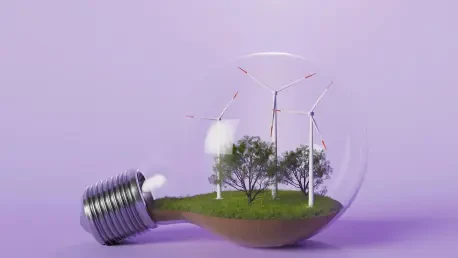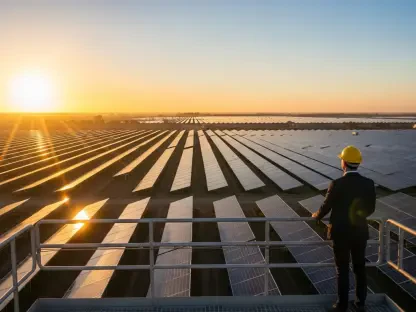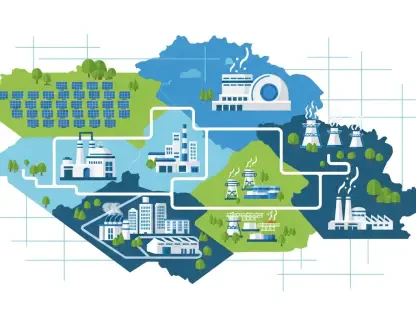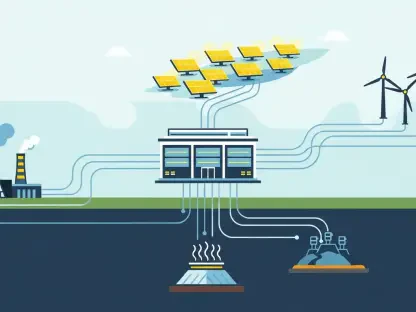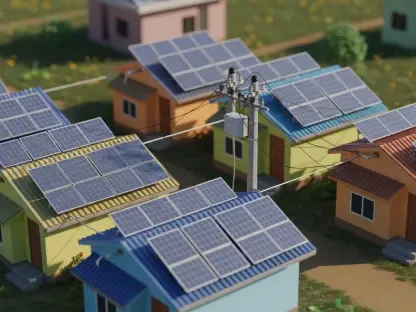In the rapidly evolving energy sector, rising electricity prices have emerged as a focal point with significant implications. At the heart of the issue lies a compelling narrative of increased energy demand, shifting power generation mixes, and fluctuating electricity prices. Insightful perspectives from leading experts and industry analysts illuminate the multifaceted consequences of these price changes on clean energy’s growth trajectory.
The Broad Impacts of Shifting Electricity Costs
Electricity prices have steadily increased since early 2025, exerting noticeable effects on both producers and consumers within the energy landscape. The U.S. energy production figures demonstrate a balancing act, where both fossil fuels and renewables have increased outputs. With clean energy’s share elevating to 45% of the production mix, experts emphasize the criticality of sustaining this momentum. However, the continued reliance on natural gas, a primary contributor, has become a pressing concern given recent cost escalations. Some analysts highlight that as natural gas prices rose, its contribution to power generation diminished by 4%, opening the path for coal’s resurgence with an 18% rise in output.
The insights gathered reflect a broader debate on how these costs impact the transition away from fossil fuels. While renewable sources like solar have experienced substantial growth, with a 34% increase, the slower advancement in wind energy, growing only by 2%, alongside declines in hydroelectric and nuclear outputs, presents a complex picture of shifting industry dynamics. On the consumer side, regional pricing disparities showcase varying challenges, with some states like Hawaii noting high retail prices, whereas others, such as North Dakota, maintain lower costs.
Navigating the Intricacies of Energy Market Changes
Experts unanimously recognize that the increase in electricity costs holds significant ramifications for business strategies and household budgets. The 4% national average retail price hike illustrates the delicate balance between sustainable energy practices and economic pressures. Rhode Island’s and Connecticut’s price surges of over 20% are particularly noted for underscoring the volatility of the market. This fluctuation prompts debates on how best to manage an energy shift that respects economic limitations while accelerating clean transitions.
Industry leaders assert that technological advancements are paving the way toward more adaptable systems capable of mitigating some of these challenges. Innovations within storage solutions and smart grid technologies are highlighted as solutions that could potentially cushion the impacts of rising costs. This evolving technological landscape promises to redefine energy practices, pushing the boundaries of what’s possible with clean energy integrations.
Regional Comparisons in Energy Costs and Impacts
Analyzing regional variations reveals that electricity price impacts are not uniformly distributed across the U.S. Despite a jump to approximately 13 cents per kilowatt-hour on average, marked differences exist in consumer experiences depending on location. For instance, East Coast states face steeper price increases, driven by unique climatic policies and energy demands. Conversely, regions with more robust renewable portfolios report a comparatively stable pricing structure.
This disparity raises critical questions about the strategies different areas employ to reconcile energy growth with cost management. Thought leaders urge policymakers to consider both systemic bottlenecks and potential synergies within regional infrastructures to design more adaptive regulatory frameworks capable of supporting this transition.
The Subtle Complexities of Energy Price Trends
Hidden beneath the more apparent trends are lesser-known aspects that significantly influence the relationship between electricity prices and clean energy adoption. Experts suggest that nuanced factors, such as transmission losses and tariff structures, demand careful examination to fully grasp their impacts. Furthermore, comparative insights underline the importance of market positioning for future success, indicating that forward-thinking investments in renewable capacity might offer a competitive edge.
Leading authorities in energy economics advocate for a deeper understanding of these layers, emphasizing the need for strategic vision when planning for the industry’s future. The potential for cross-regional learning offers an exciting opportunity for shared progress, as areas with successful outcomes can serve as models for others.
Synthesizing Insights into Actionable Strategies
The intricate dynamics of electricity prices and clean energy growth present both opportunities and challenges for stakeholders across the spectrum. Navigating these waters calls for innovative approaches and collaborative efforts. Summarizing these multifaceted insights points to critical areas for focus: technological innovation, regional adaptation, and cohesive policy frameworks.
As the energy sector continues its transformative journey, fostering resilience against rising costs will require a blend of persistent innovation and pragmatic policy adjustments. Future considerations must address the overarching need for energy transitions that are just and sustainable, ensuring both environmental goals and economic considerations are met. This collective endeavor, driven by informed strategies and unified vision, holds the promise of paving a successful path toward a cleaner energy future.
